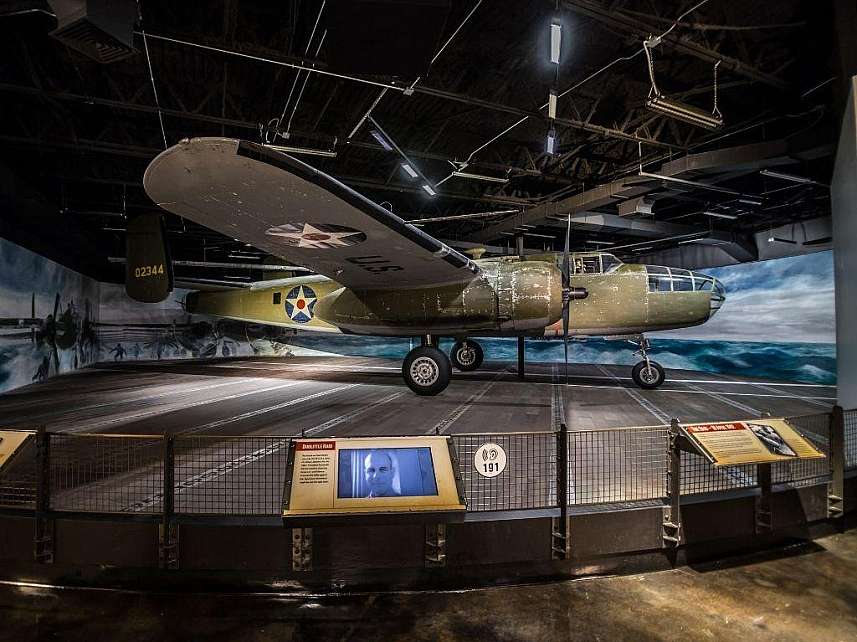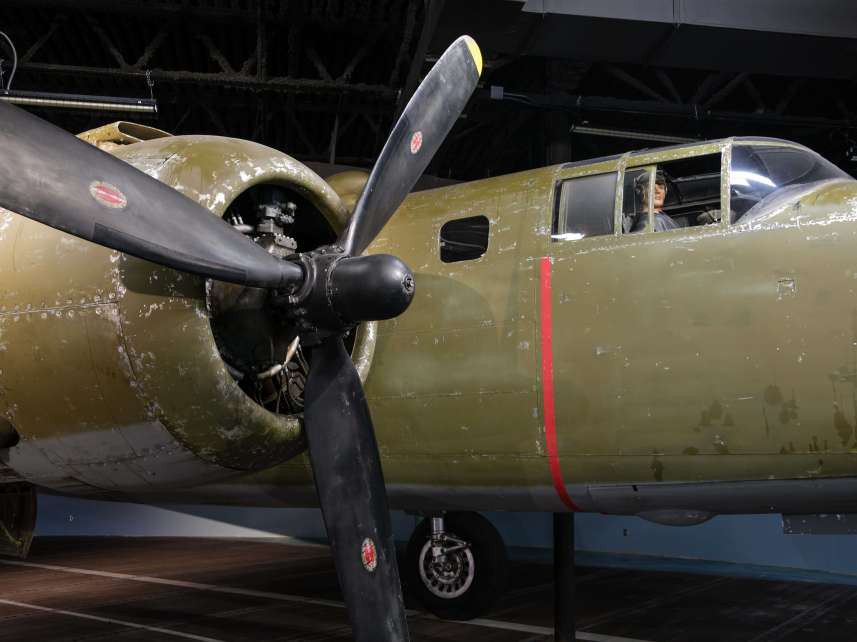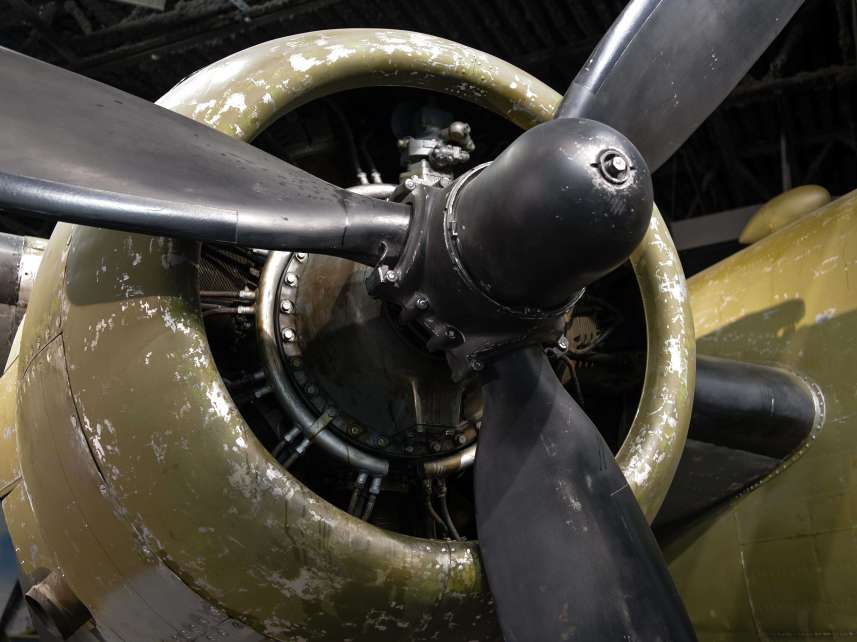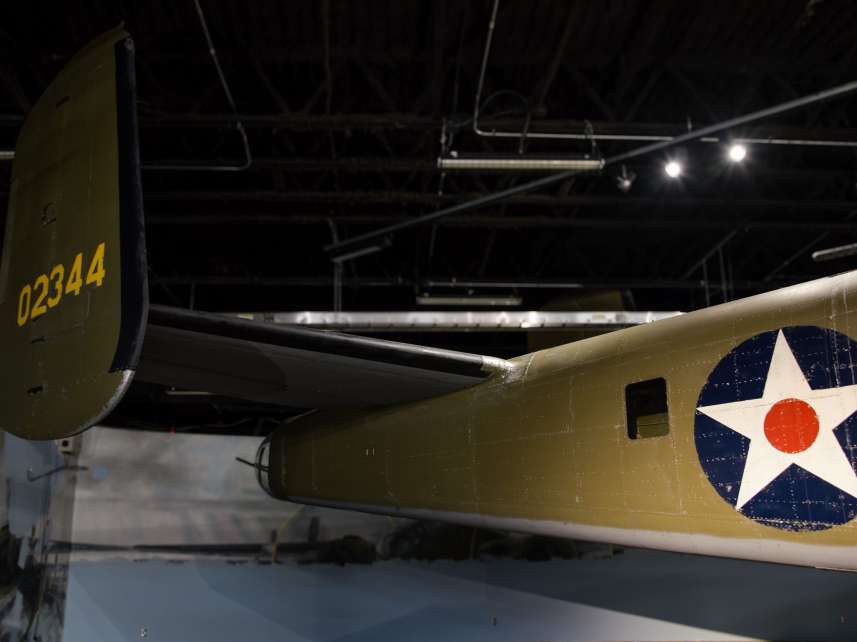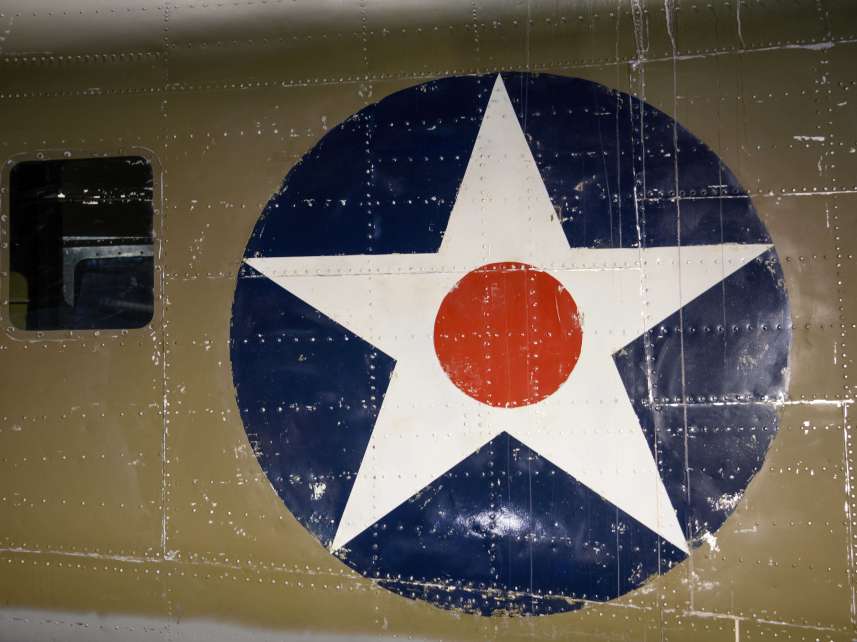A B-25J painted and reconfigured to model the B-25B flown by Lt. Col. James H. Doolittle and the other members of the Doolittle Raid. This plane is on loan from the National Museum of the United States Air Force in Dayton, Ohio. The B-25 was chosen for the raid because it was the only bomber small enough to fit on an aircraft carrier flight deck but with enough range to complete the mission. Even then, the aircraft used in the raid were modified to be lighter and carry reserve fuel. The guns were removed and replaced with painted broom handles, the engines were recalibrated, and even the windshields were replaced, all to make the aircraft the most efficient possible for the unique mission ahead of them.
The Plan: B-25
This section examines the issues and solutions for planning and executing the Doolittle Raid.
Overview
There were many issues in planning a counterattack against Japan. No American land-based planes had the range to make it to Japan, but the carrier-based planes were too small to carry the necessary bomb load.
Col. Doolittle and a few advisors decided to use the land-based B-25s launched off the aircraft carrier USS Hornet. The planes would not be able to land on the carrier after their mission, so Doolittle turned to America’s Chinese and Soviet allies, hoping for permission to land in their countries. China agreed, but the Soviet Union, worried about their non-aggression pact with Japan, refused.

Crew of Plane No 1, piloted by Col. Jimmy Doolittle. Official U.S. Navy photo.
For the raid to be successful, the Americans needed to surprise the Japanese like they had been surprised at Pearl Harbor. The mission was kept a secret, and few people knew the full extent or purpose of the plans they were making. Even the American military attaché to the Chinese, General Joe Stillwell, was not informed for fear that word would make its way to the Chinese and risk being leaked to Japan. The plane crews selected for the raid were only fully briefed on their mission after they were aboard the carrier en route to Japan.
B-25
Exhibit Preview
The Doolittle Raid Exhibit
After the attack on Pearl Harbor, President Roosevelt wanted to boost national morale by striking back at Japan. In April 1942, the military launched a bombing mission, marking the start of America's ...


